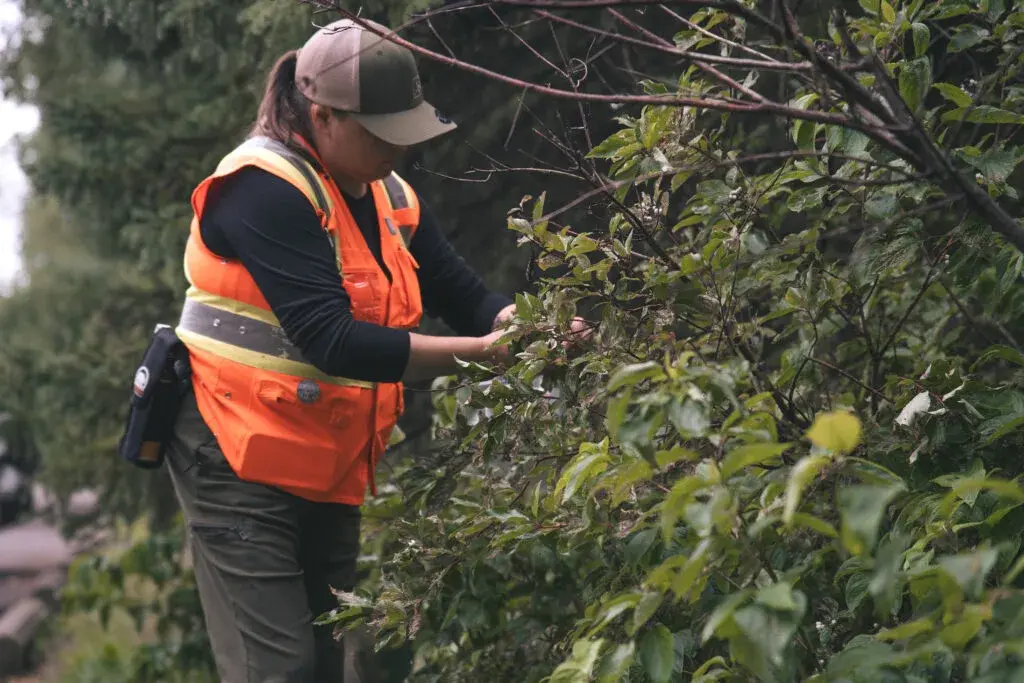So, in the late 2010s, the Saulteau First Nations held meetings with members to ask the communities what they wanted to see on their homelands. One of the key objectives identified in the meetings was for the nations to start a reclamation company of their own.
In 2019, the B.C. Energy Regulator, then the B.C. Oil and Gas Commission, hired the First Nations to reclaim an orphan well pad east of Moberly Lake, between the Peace and Pine Rivers, about 750 kilometres northeast of Vancouver.
By consulting Elders and members, the Saulteau First Nations collected data on plants used for sustenance, medicine and more. The nations compiled information dating back at least 50 years, and created a database of trees, shrubs and grasses that are native to their homelands.
With this knowledge, the reclamation team identified what plants needed to be re-introduced to the site. They planted several native species, including black spruce trees and cottonwood. They reintroduced willow and red osier dogwood, which Aird says are important for moose.
Five years later, Aird said native animals have returned to the site, too. She leads tours of the site so Saulteau First Nations Elders can see how the land has changed. The bare well pad has been transformed into a thriving wetland.



Superb work. Let’s see more of it.